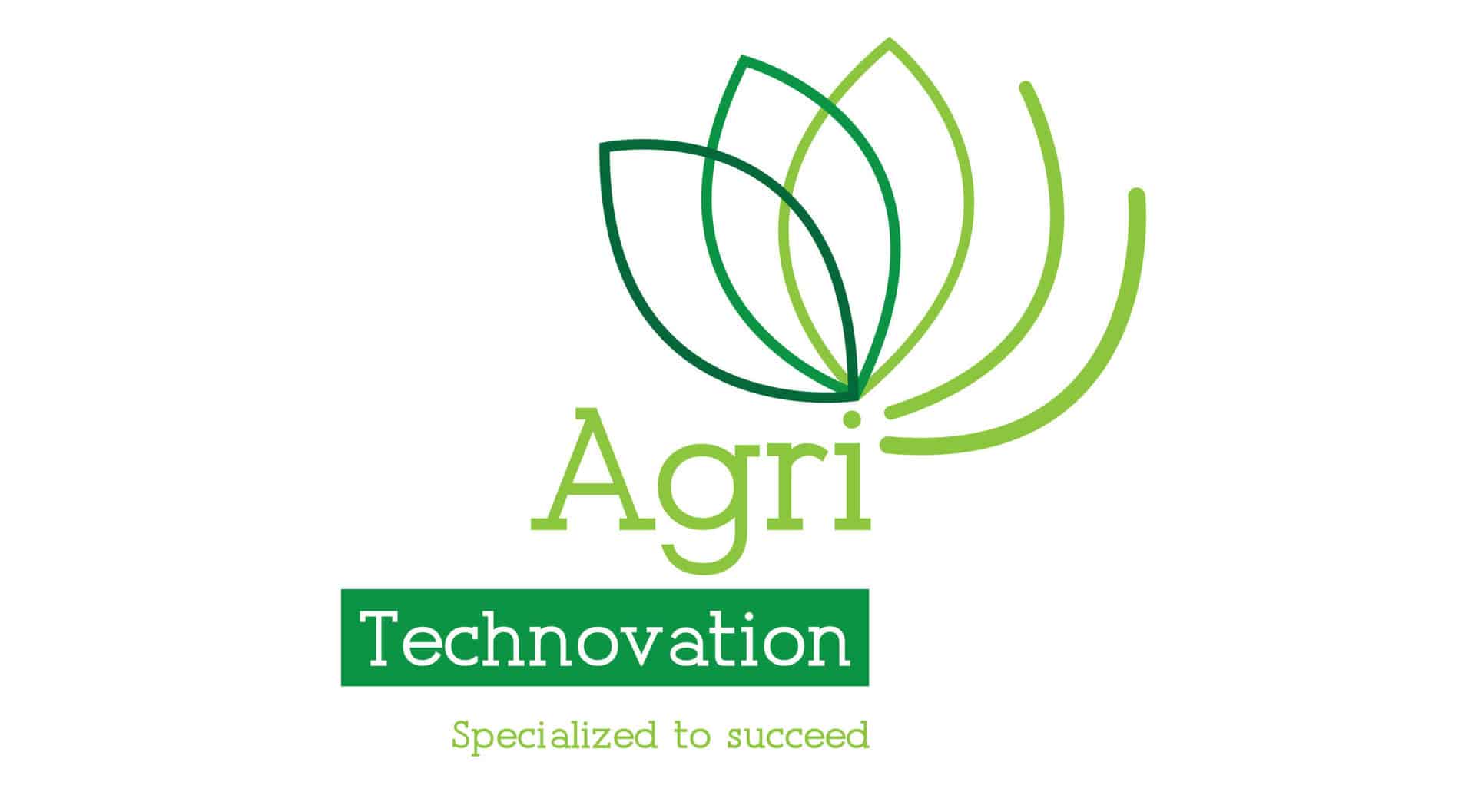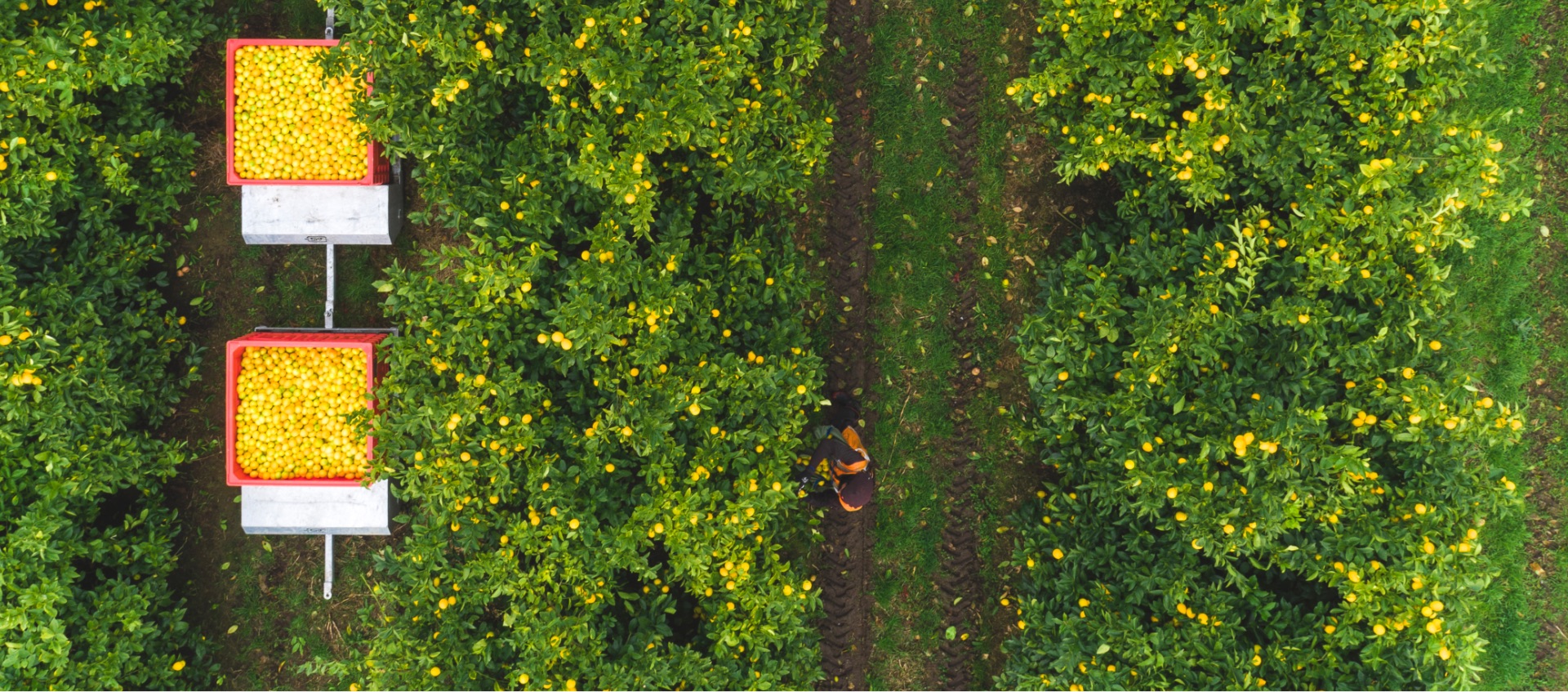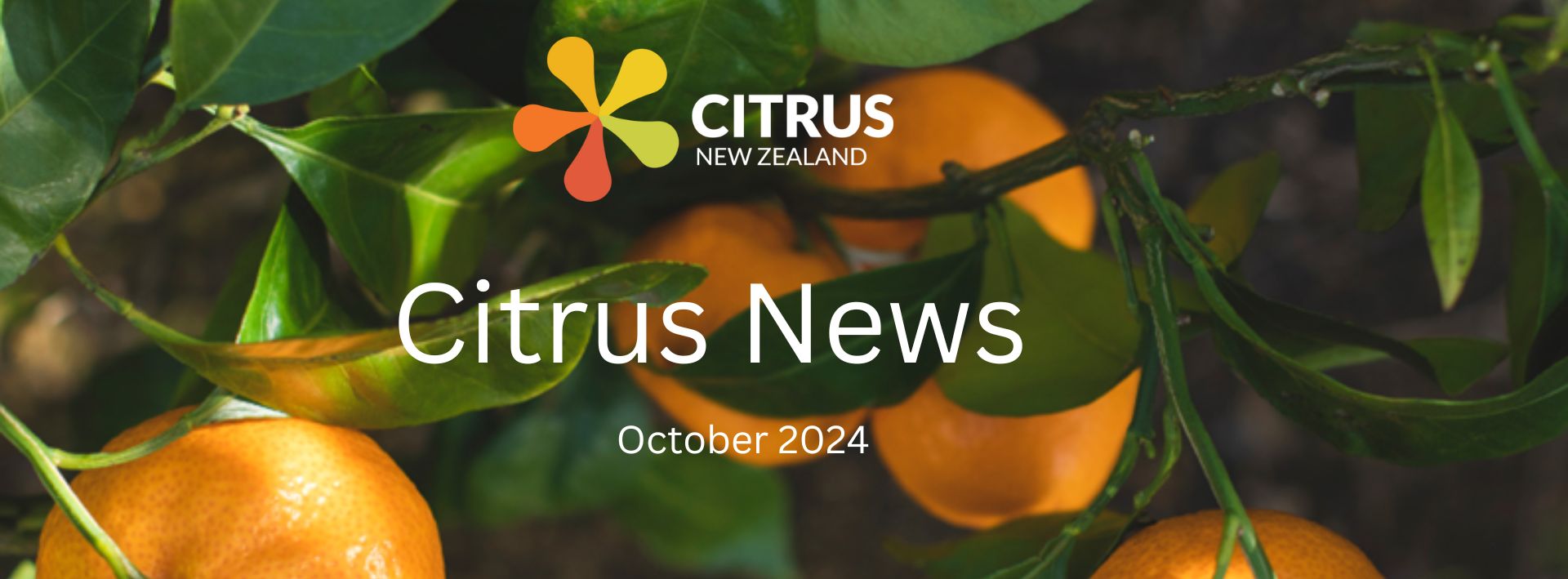From The Chair
First and foremost, a belated Happy New Year to you all! I hope you managed to take a well-earned break and spend some quality time with family and friends.
Welcome to the newly minted Citrus NZ newsletter. We’ve introduced a new format and delivery style—now bi-monthly- to make it simpler, more efficient, and easier to navigate.
If you live in Gisborne then to paraphrase Sean Fitzpatrick its so far been a summer of two halves. Hot and dry through most of December and then cool and wet since then. The Far North has been largely dry all the way though Spring and Summer. Certainly in Gisborne the hot and dry period has had some impact on fruit set after what was a pretty decent Spring flowering across most crops. Anecdotally, the word “patchy” seems to be being bandied around when it comes to crop-load, although my gut feel says that we should see an overall increase in citrus volumes this season. Up north they could do with a bit more rain between now and harvest mainly for fruit sizing. Quality looks good, but overall volume is expected to be down on last season.
There’s no getting away from it, the past three years have been tough for growers, with weather challenges, fruit yield and quality issues, rising costs and increased import competition making sustainability a struggle.
But there’s hope. Labour shortages have eased, inflation has slowed and overall, the weather is improving. Are we in the clear? Not quite—but it’s time to start looking ahead.
Last year, the motto was “Survive till ‘25.” This season, my new catchphrase is “Thrive in ’25”!
As a marketer by trade, I tend to see the glass half full, but I genuinely believe in promoting the citrus industry in a positive, proactive light. That doesn’t mean sugarcoating challenges—especially with customers and consumers—but showcasing our progress and potential is essential.
This year, Citrus NZ is ramping up grower and customer engagement initiatives to improve communication and share valuable information. Better connections and knowledge-sharing can positively impact grower outcomes. The Citrus NZ Board will meet in late February to refine these initiatives, with plans to launch them in the coming months. If feasible, we’ll also conduct market research this year to gather valuable sector data and insights to help inform future planning and decision-making for your business and the wider sector. We’re keen to hear from you!
There’s no quick fix for the challenges we face—it takes effort from everyone in the industry, from growers to marketers and service providers. That’s why the Levy Referendum is crucial. Citrus NZ relies on levy funding to operate and deliver value to the industry. Voting papers will be sent out on the 25 February, so please have your say. Note that this is a procedural renewal required every six years, and the new levy order will take effect in 2026.
On the biosecurity front, the recent fruit fly find in Auckland highlights just one area where Citrus NZ is hard at work. During a recent response exercise with MPI, staff noted that Citrus NZ is well ahead of many other product groups in readiness. Your levy funding supports this critical work, ensuring we’re prepared to tackle potential threats.
In export news, we’ve been invited to submit a market access request for citrus to Taiwan, a significant step as our previous access lapsed due to inactivity. These processes take time, often years, but they’re vital for the industry’s growth. Meanwhile, our request to restore Meyer lemon access to South Korea is now a top priority, and we’re hopeful for a positive outcome this year.
I’m looking forward to connecting with you throughout the season. Feel free to reach out to me at . I may not have all the answers but more than happy to chew the fat.
Ian Albers, Chair Citrus NZ
In Depth: Citrus Commodity Levy Order Referendum
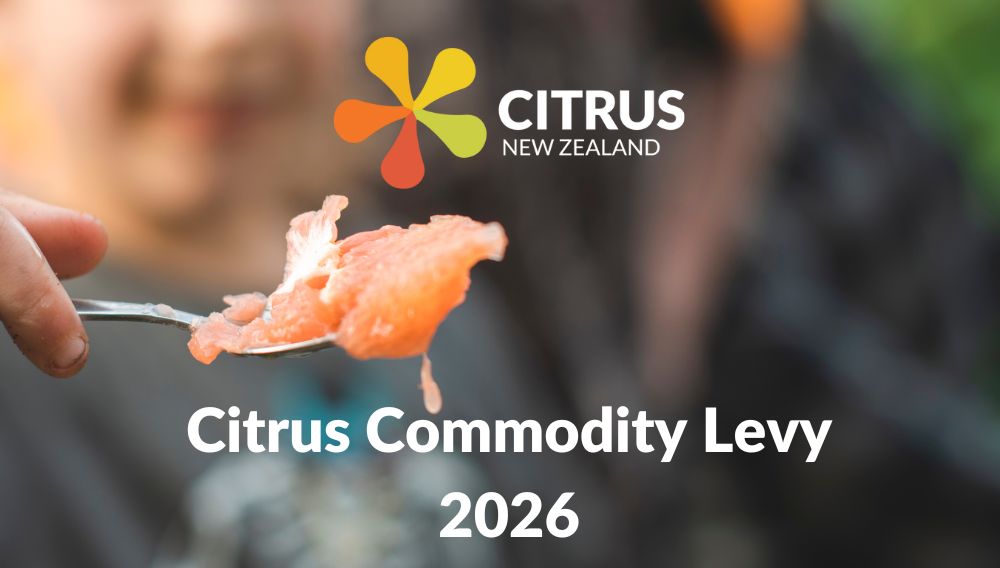
The Citrus Commodity Levy Referendum opens on 25 February. This is your chance to vote on the levy that supports vital industry work, including research, tech transfer, market access, grower engagement and CNZ operations.
All citrus growers who have sold citrus fruit for commercial purposes, including processing, for the 12 months ending 31 March 2024, are eligible to vote. This includes individuals, partnerships, companies and other legal entities involved in the commercial production of citrus.
If your contact details have changed and you have yet to notify Citrus New Zealand, please email .
Industry Updates
Market Access
Citrus NZ has several market access initiatives underway, including a proposal to secure market access for lemons into Taiwan.
A key priority is restoring access for Meyer lemons to Korea, which was lost when Korean authorities ruled that Meyer lemons were not covered under the authorisation to import Citrus limon. Korean officials are actively working to resolve this, and we are hopeful the market will reopen within the next year.
Additionally, Citrus NZ is two years into the application process to gain market access for lemons, mandarins, and oranges into the Philippines.

Research & Development
A new germplasm trial block of 12 early to late season mandarin varieties was planted at Kerikeri in October to evaluate their performance under Northland conditions.
These varieties were carefully selected through a screening process and are all late-season mandarins (harvested from June to September). They feature desirable traits such as being low-seeded or seedless, having high brix levels, good fruit-holding ability and strong tolerance to pests and diseases.
The trial includes 12 selections, each propagated onto four different rootstocks: C35, Cox mandarin, Benton, and Trifoliata. Similar to the trial planting in Gisborne, this block will be closely monitored and evaluated over the next four to five seasons, as the trees mature.
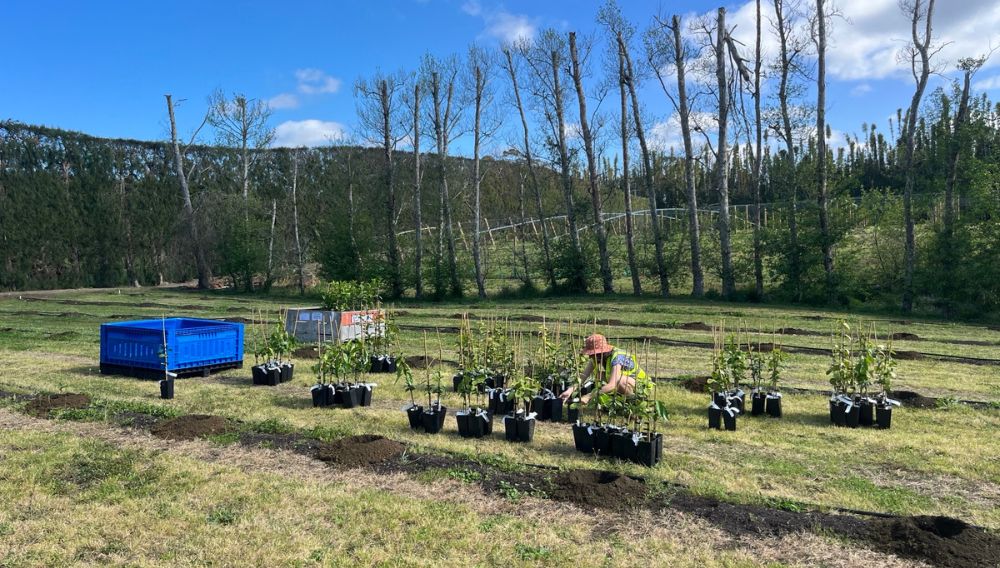
Biosecurity
The response to the recent Oriental fruit fly detection in Papatoetoe should be nearing its conclusion shortly- provided no further flies are detected.
A male Oriental fruit fly was detected in a surveillance trap on 3 January 2025. Ongoing surveillance and trap monitoring are continuing within the designated zones, along with inspections of fruit growing in the area. Strict controls remain in place to prevent the movement of host fruits and vegetables out of the controlled zone, as to reduce the risk of spread. So far, no further fruit flies have been found.
Oriental fruit fly is a highly invasive pest. Female flies lay their eggs beneath the skin of host fruits, and the resulting larvae feed inside the fruit, causing rot and rendering the fruit unmarketable. With over 300 host plants—including citrus, apples, and kiwifruit—the potential impact is significant.
If the Oriental fruit fly was to establish in New Zealand, the horticulture sector would face serious challenges, including trade disruptions, increased production costs and yield losses.
Citrus NZ, as a signatory to the Fruit Fly Operational Agreement under the Government-Industry Agreement (GIA) for Readiness and Response, has been actively involved in governance and joint decision-making throughout this response.
Biosecurity Response Workshop
In November last year, MPI facilitated a biosecurity response workshop for Citrus NZ Board members. The workshop introduced Board members to the sector’s key responsibilities during a biosecurity response, with a focus on roles in Governance, the Incident Management Team (IMT) at the National Coordination Centre in Wellington and the Regional Control Centre, which oversees field operations.
The session also explored how the citrus sector could strengthen its capacity to respond effectively alongside MPI in the event of a significant outbreak. Using a scenario based on an incursion of Asian Citrus Psyllid in the Gisborne region, the workshop provided valuable insights and preparation for a potential response.
This knowledge puts Citrus NZ in a strong position to manage future biosecurity challenges. Growers can learn more about what happens during a response in the Biosecurity Response Guide for New Zealand Citrus Growers (found in the members only section on our website).
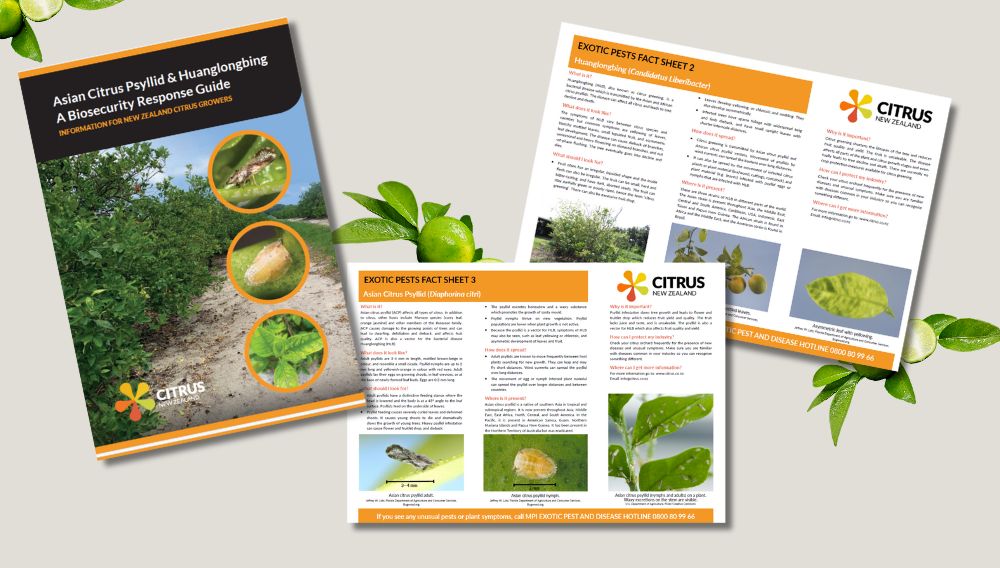
Policy Updates
In December, WorkSafe unveiled new REIs for pesticides. WorkSafe’s REI’s (Restricted Entry Intervals) and guidance can be accessed here: WorkSafe REIs for Pesticides.
From 10 June 2025, the following REI’s will apply for citrus:
- Acephate: 47 days
- Maldison: 48 hours
- Pirimiphos methyl: 2 days
- Permethrin: 2 days
As a grower or orchard manager, it is your responsibility to manage areas where pesticides with REI’s have been applied. Ensure no one enters the application area before the REI expires, unless they are wearing the appropriate personal protective equipment (PPE).
Advertising Opportunities
The Citrus News is New Zealand’s bi-monthly digital publication, tailored for growers, industry stakeholders, leaders, decision-makers and media within the citrus industry. It delivers timely updates on biosecurity, market trends, innovation, research and development and events.
With a focused subscriber base, and a distribution to over 700 subscribers, the e-newsletter is a vital communication tool for the New Zealand citrus industry, offering excellent advertising opportunities for businesses targeting this sector.
For detailed information on the advertising rates and to position your brand as an innovator and trusted supporter of the citrus industry, download the flyer or contact CNZ at

Grower Advice & Tips
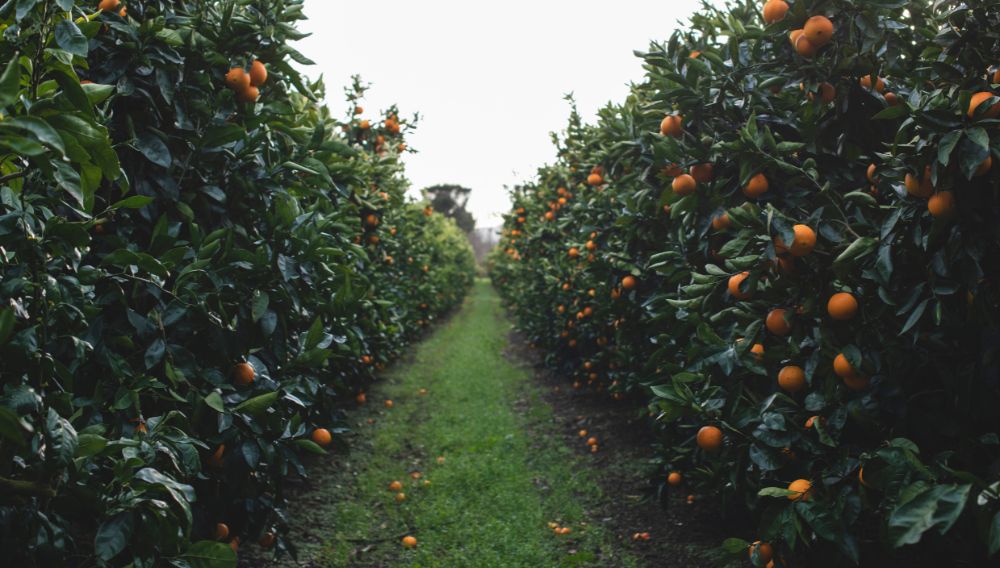
Introducing a new section of Citrus News to provide growers with practical, up-to-date technical information—supporting decision-making, tackling challenges and staying ahead in an evolving sector. We want to hear from you—if there are topics or questions you’d like us to cover, drop us a line at , and we’ll work to feature them in future editions.
In this issue, we’ll explore the use of Gibberellic Acid (GA) in citrus production. GA is a widely used plant growth regulator in horticulture and agriculture, affecting various crops in unique ways. When applied correctly, GA can significantly enhance fruit quality and improve grower returns across a range of citrus varieties.
Be sure to consult individual chemical labels for specific application rates, and seek advice from your advisor or merchant regarding timing and rates tailored to your crop and region.
Rind Strengthening
One of the most significant benefits of using gibberellic acid (GA) in citrus production is its ability to strengthen rinds and reduce issues such as creasing (albedo), water spotting, oleocellosis and post-harvest breakdown:
*Navel oranges: Apply GA at a concentration of 10 ppm when the fruit is “golf ball” sized (30–50 mm).
*Satsumas: A lower rate of 5 ppm at colour break is effective.
In some cases, particularly under challenging weather conditions, GA applications have been the critical factor between producing a marketable crop and experiencing total crop loss.
Delayed Colour Development
When applied at higher concentrations, GA can delay the green-to-orange colour change, allowing for extended harvesting periods:
* Satsumas: Useful for managing extended harvests without sacrificing quality, especially when other crops need to be harvested simultaneously. While colour development is delayed, internal maturity is unaffected, ensuring fruit quality remains high and the extension of colour development time will depend on conditions at the time and during the maturity period.
*Lemons: GA can also be used, but be aware that GA-treated lemons are more challenging to de-green and will continue to grow.
Inhibiting Flowering in Mandarins
GA has a unique application for mandarins, where it can inhibit flowering on:
*Young trees: Apply at 50 ppm. Particularly helpful to establish younger trees faster as the energy is redirected energy into vegetative growth rather than crop load.
*Cropping trees: Apply at 25 ppm going into a heavy “on” year, to reduce flowering.
When using GA, it’s essential to follow specific application requirements for optimal results. Key points to remember:
- Apply in warm, slow-drying conditions, ideally early morning with temperatures around 20°C for the next two days.
- Ensure good coverage with sufficient water volume to the point of run-off.
- Add a non-ionic surfactant
- Check the spray water pH—some products require slightly acidic water (pH 5.5–7.0).
- Avoid applying GA for four weeks after a copper and/or mineral oil spray to prevent reduced uptake or potential fruit marking.
- Do not apply GA to stressed trees.
For more details, consult your advisor or merchant, and always read product labels thoroughly. Recommended GA products for citrus include Growth and ProGibb.
Citrus In The Media
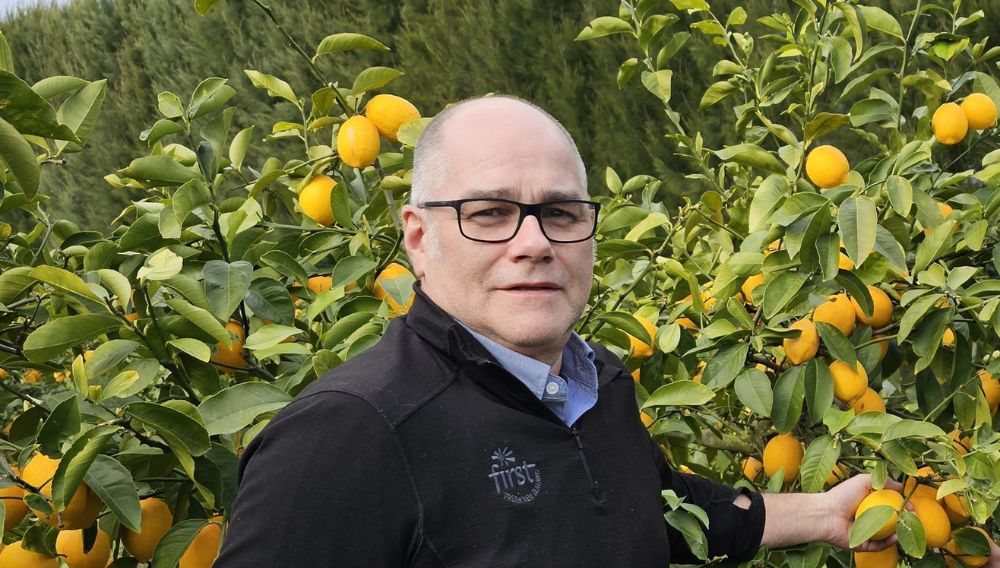
LEADING a big national organisation is no easy task but for new Citrus NZ chair Ian Albers it all boils down to one aim . . . achieving long-term viability – and growth – for the more than 300 member growers that form the backbone of the industry.
And with Citrus NZ heralding Ian’s leadership as “the beginning of a new chapter”, it is only fitting that one of his first jobs is to front-foot the proposed new Citrus Commodity Levy Order that will allow NZ Citrus Growers Inc (Citrus NZ) to continue its work.
The levy is “new” in that it will replace the Commodities Levy (Citrus) signed off in 2019.
But the levy rate is the same, as is its purpose to fund the grower body’s work in everything from promotion and market access to research and developing new varieties.
Ian says feedback to date had been positive and, on that note, he’s not surprised.
“Growers generally accept that the levy is not a huge cost and, for what they pay, they get big bang for buck,” he says.
“The work it funds is critical for the good of the industry and rolling their resources into one levy gives them the collective oomph needed for surety now, and growth going into the future.”
While there are no changes proposed to the levy, Citrus NZ believes seeking feedback gives growers the chance to bring up any issues of concern.
Consultation is well under way with on-line voting due to open on February 25 and close five weeks later, on April 2.
When Ian Albers’ appointment was announced in October, he admitted he was taking the chair after three tough years for the industry.
“Challenging weather conditions, a pandemic and a cost of living crises created the perfect storm . . . literally and figuratively,” he says.
“Sustainability is a real challenge for our industry but I believe the vision in our 2023-2028 strategic plan captures the essence of CNZ’s role, ‘to sustainably maximise grower productivity and profitability’.”
Ian brings to the chair more than 25 years of experience . . . it’s been quarter of a century since the former Mainlander moved to Gisborne to join First Fresh, the marketing company of which he is now co-owner and chief executive.
Working on behalf of around 150 growers has seen him and his team ricochet around the world securing knowledge and markets, as well as supporting their growers on the ground.
And for the last dozen years he’s also been on the Citrus NZ executive, most recently holding the export portfolio.
That in itself represents a period of change for the organisation, which in 2019 (?) streamlined its former structure that had multiple committees looking after a group of products e.g. the Lemon, Lime and Grapefruit Product group.
“Within the product groups there were many issues common to all citrus growers so there was a lot of duplication going on, which was sorted when the new structure came into play,” he says.
“The industry was ripe for change and with the backing of member growers, the move towards a more strategic focus went through smoothly and has since proved its worth.
“An approach like that is always our intent: to communicate with growers; to learn from their feedback; and to act in their interests. It’s a two-way street.”
Citrus NZ is also actively working to identify and evaluate new varieties with a selection of mandarins from the PFR germplasm block in Kerikeri undergoing trials. To ensure robust testing, the trial programme has been extended to Northland allowing for assessments in New Zealand’s two primary citrus-growing regions.
The trial encompasses 12 late-season, easy-peel, low-or-no-seed varieties the company believes will appeal to customers while extending the season to offer continuity of supply.
“On the one hand we are advocating for good support from our domestic buyers. On the other, we’re providing a solution to customers’ desire to have good NZ fruit just about all year round,” says Ian.
That aim highlights an existing issue Citrus NZ is committed to working on by advocating for a stronger domestic market in which growers’ incomes are not derailed by ill-timed imports.
“We have a sector that has great potential, but citrus remains the second-largest imported fruit in New Zealand, behind bananas. Competing with these imports during our peak season, presents significant challenges for our growers,” says Ian.
“Our challenge is to work with growers to ensure good supply of great product, while at the same time advocating for our fruit to be first port-of-call when it’s in season, rather than having to compete with lower-grade imports.”
For the citrus industry individual challenges like that pile on top of two pretty average seasons, punctuated by awful weather including two cyclones, he says.
“So in some respects we’re at a bit of a crossroads and I’m keen to lend commercial experience to helping achieve a strong and sustainable future for our growers.”
Upcoming Events

